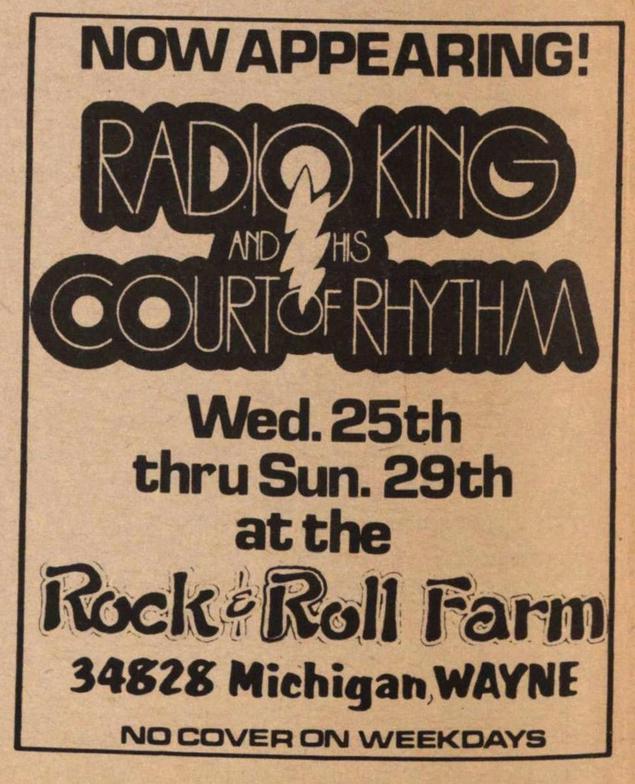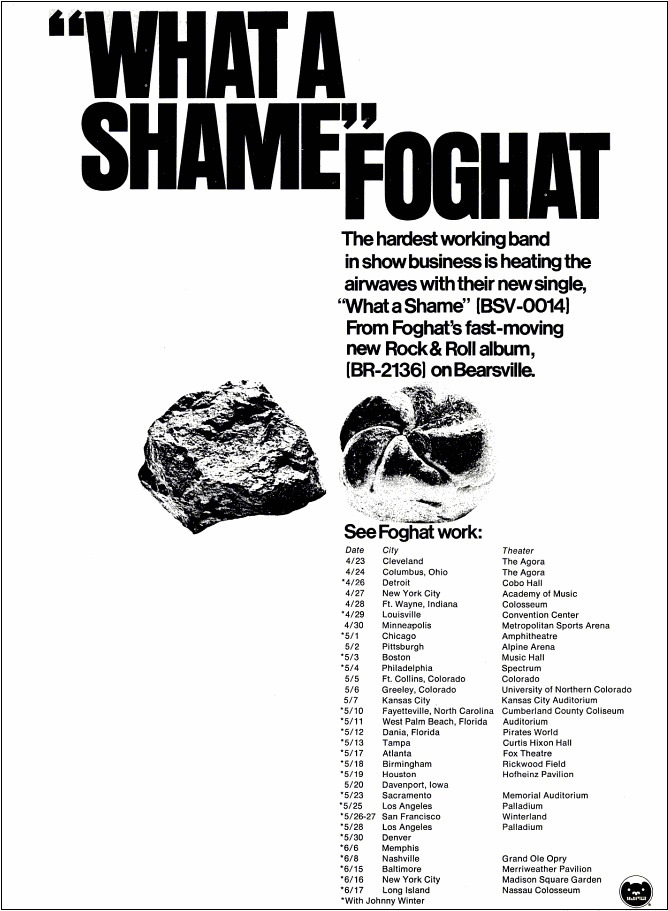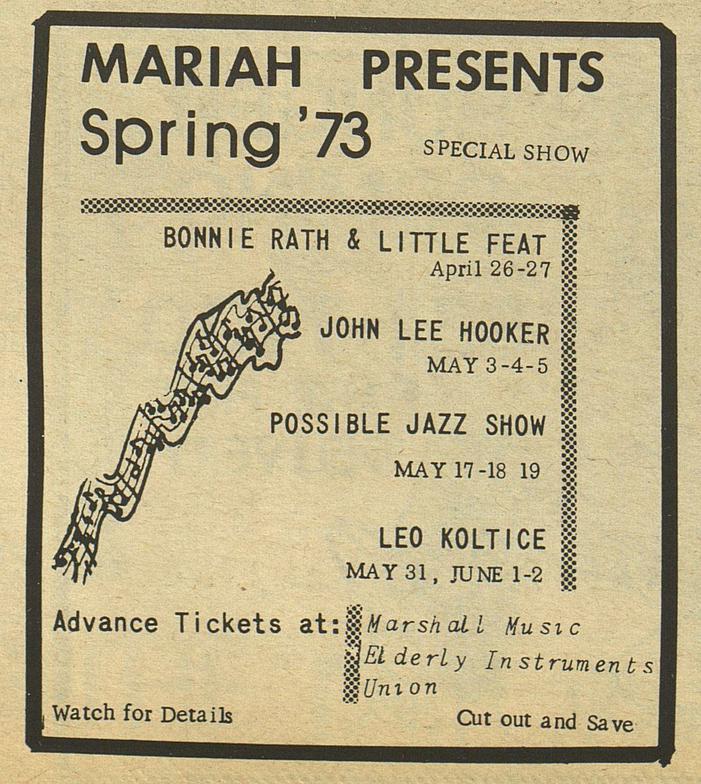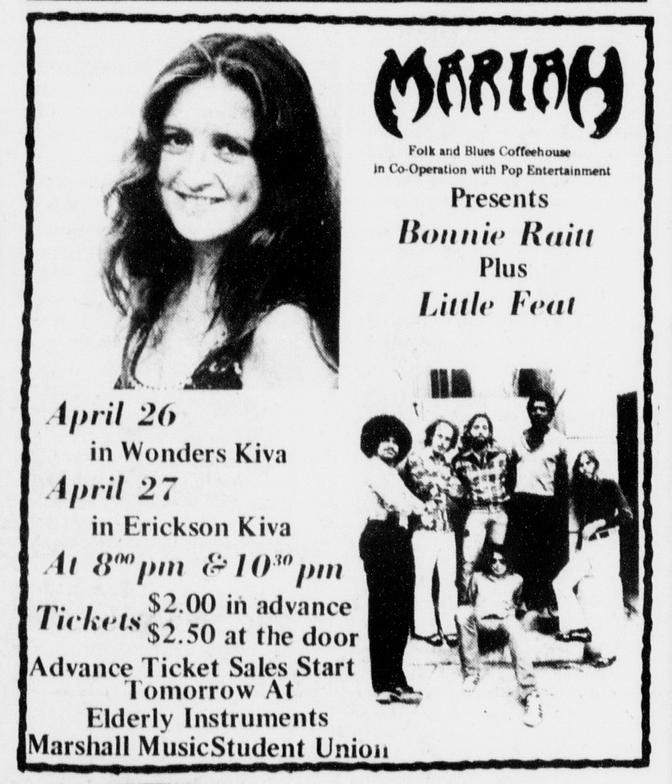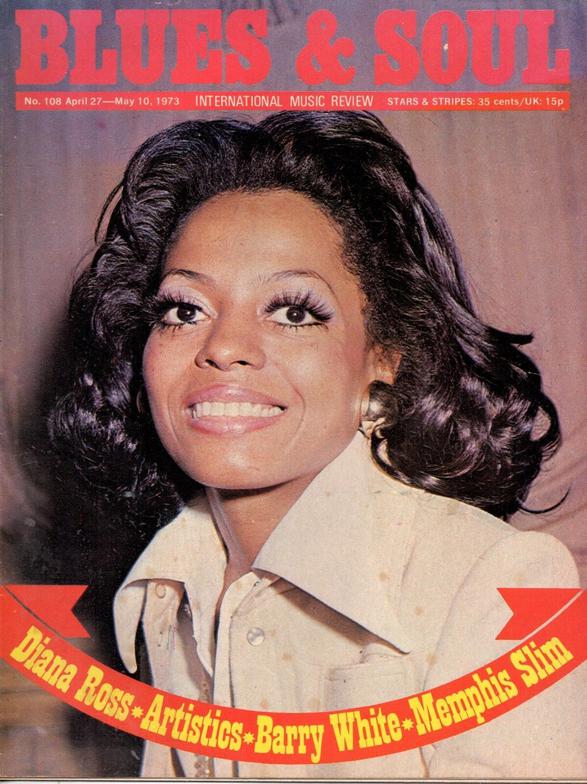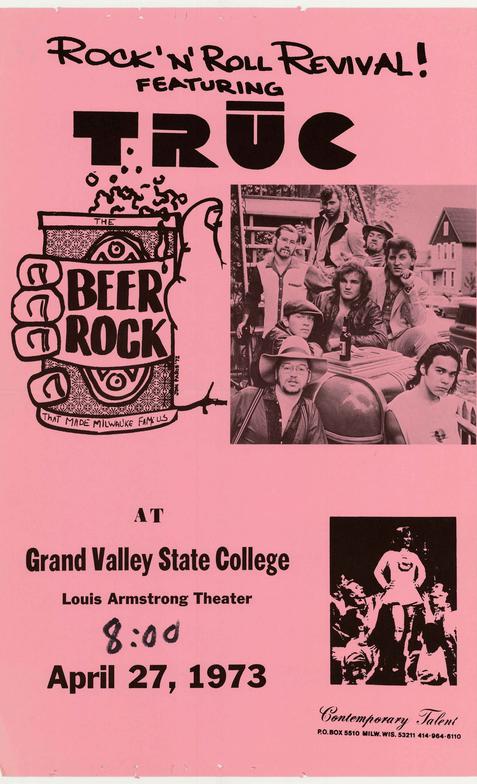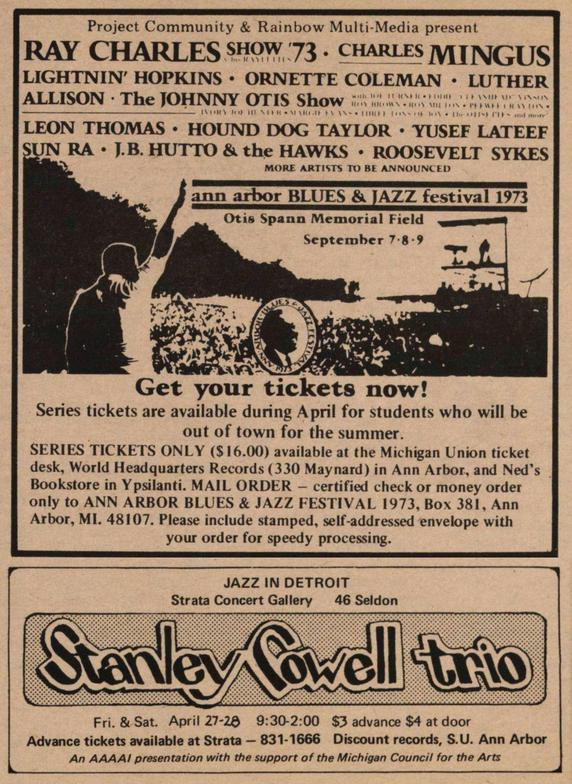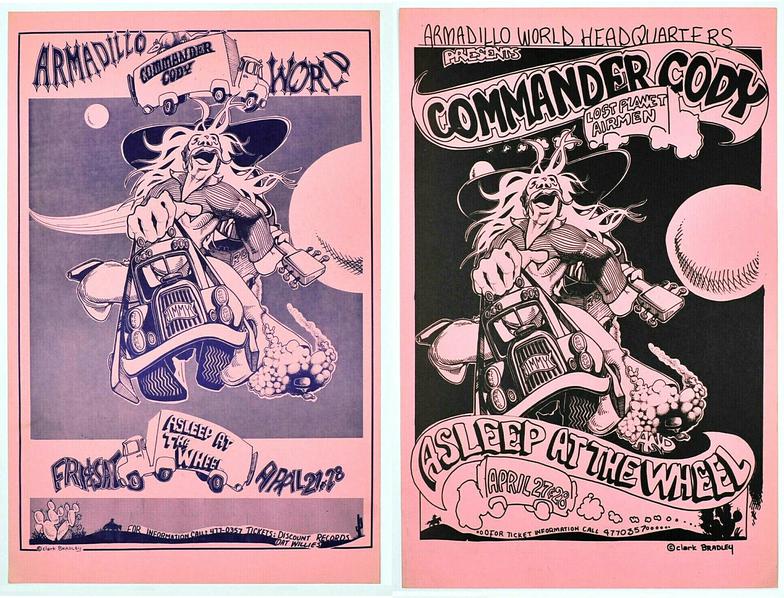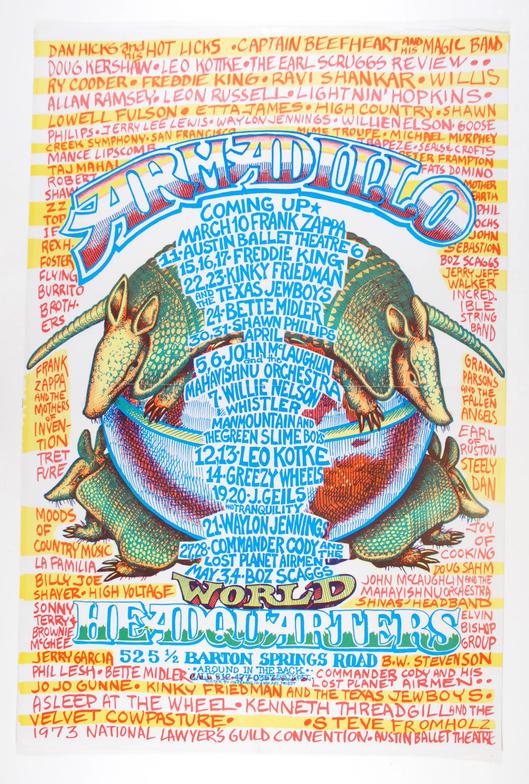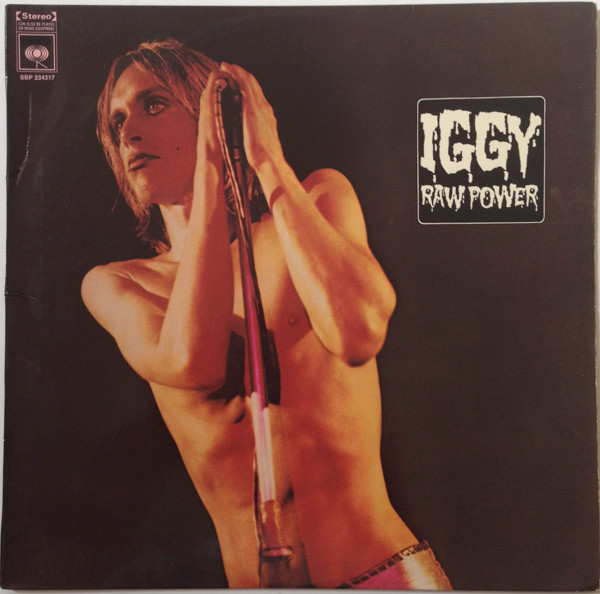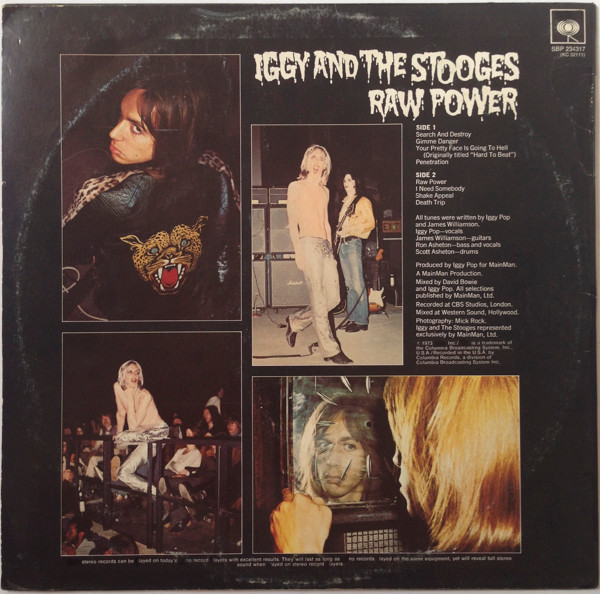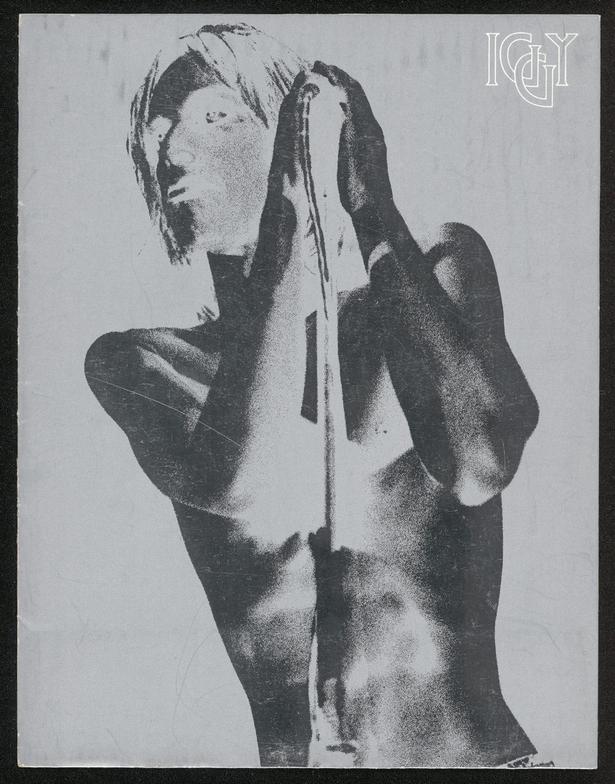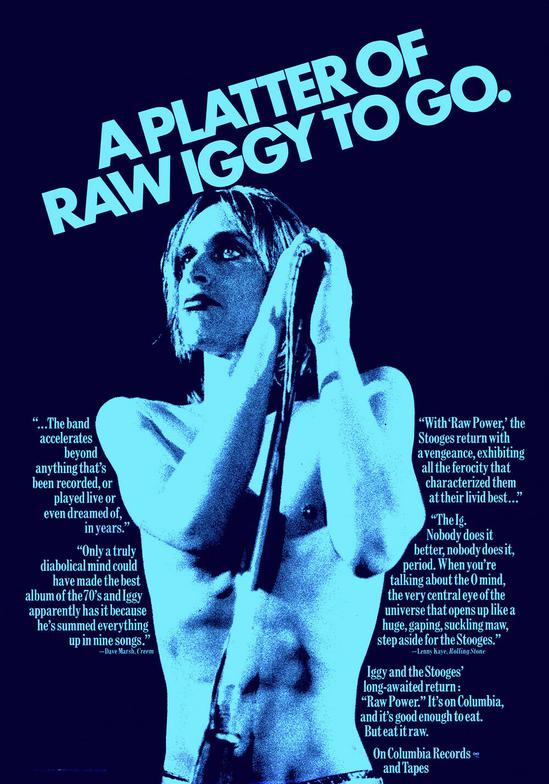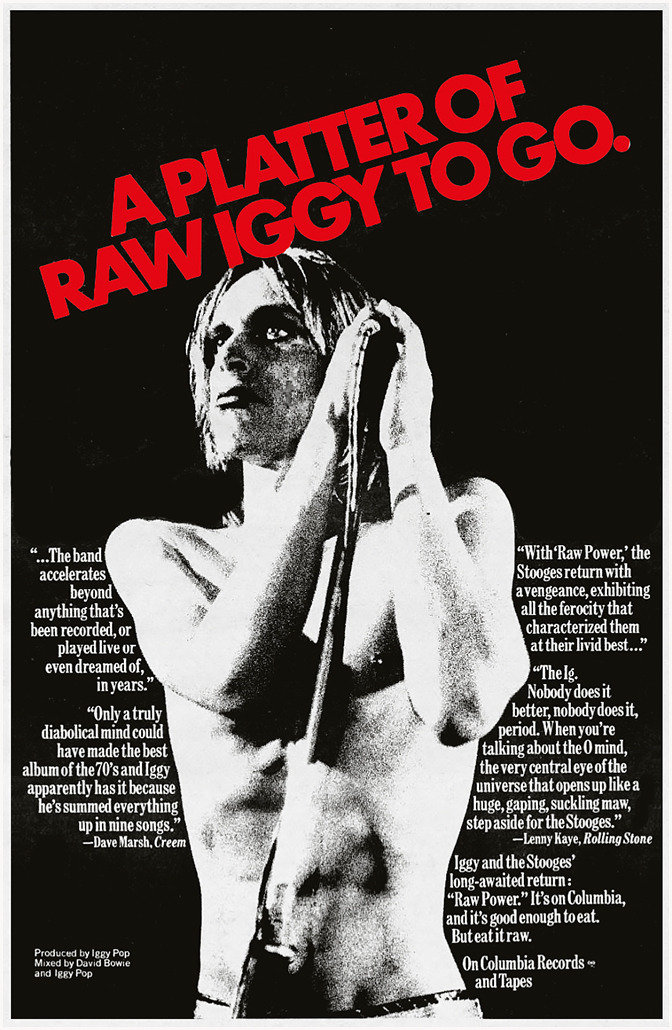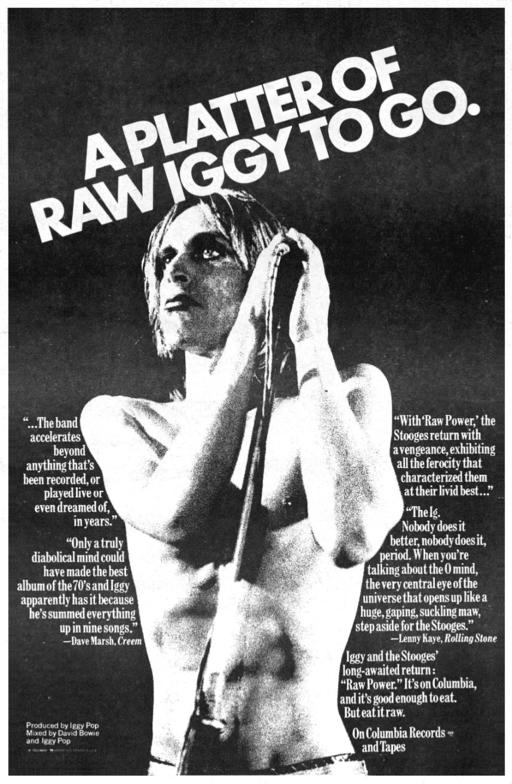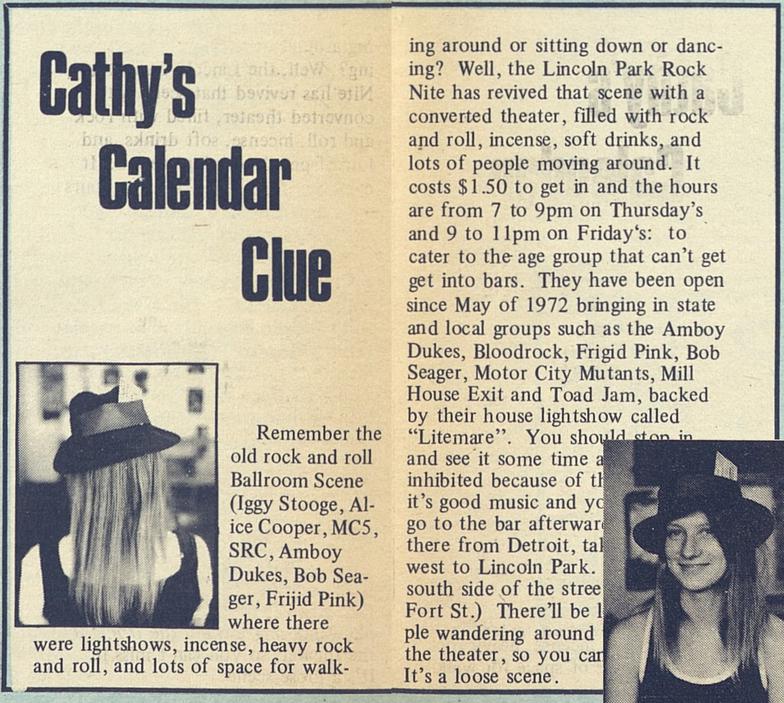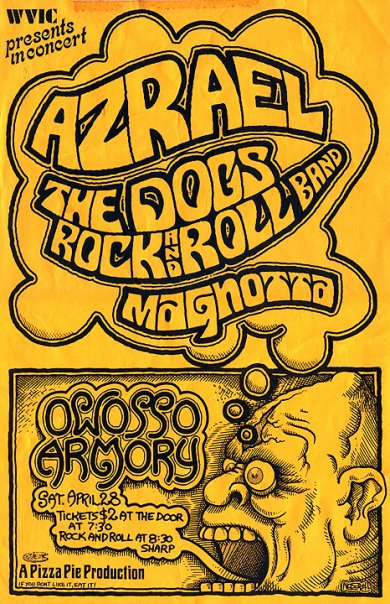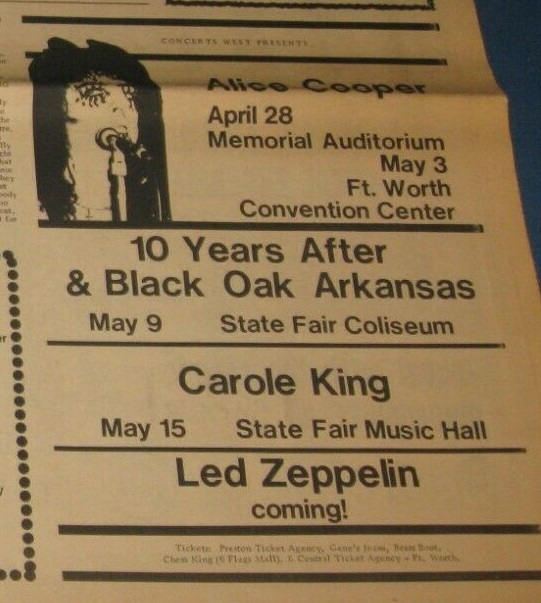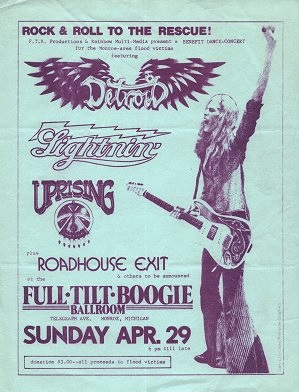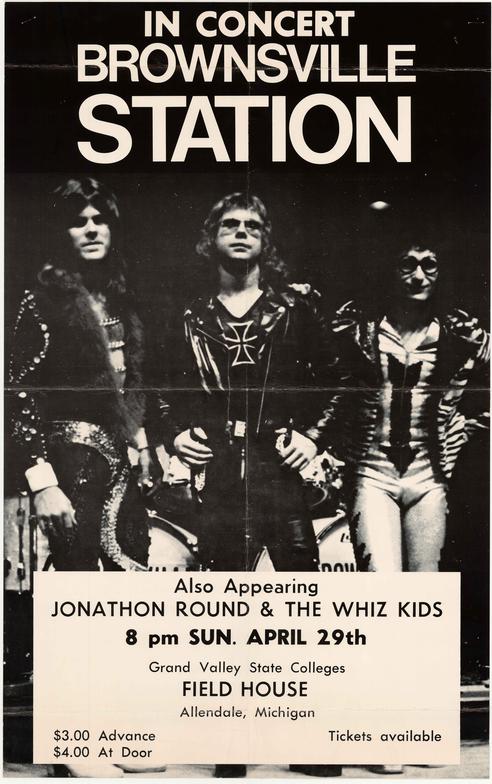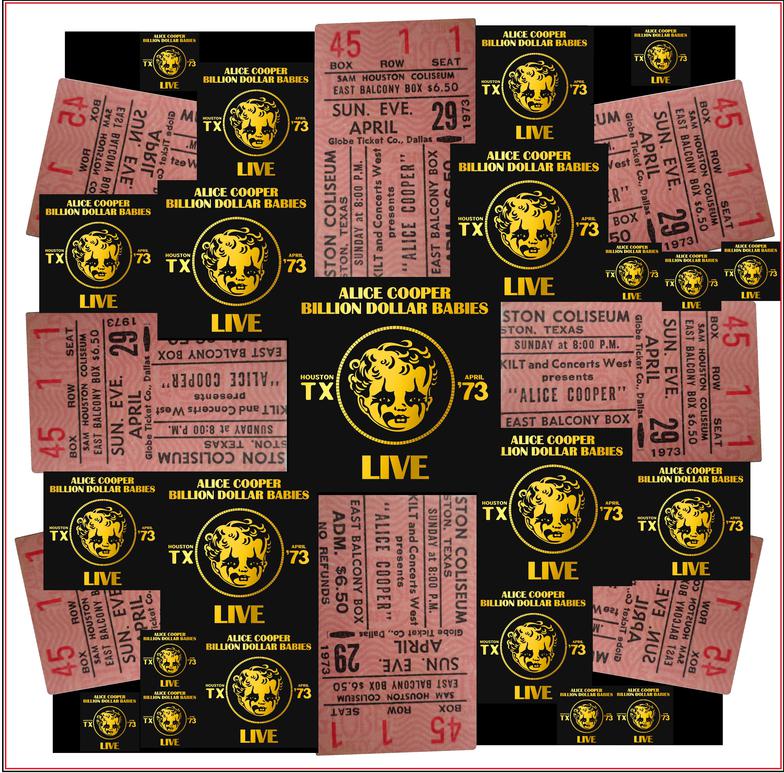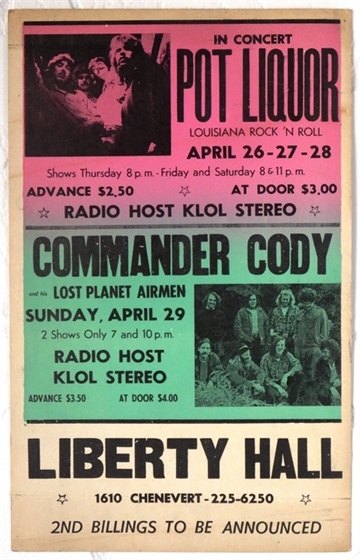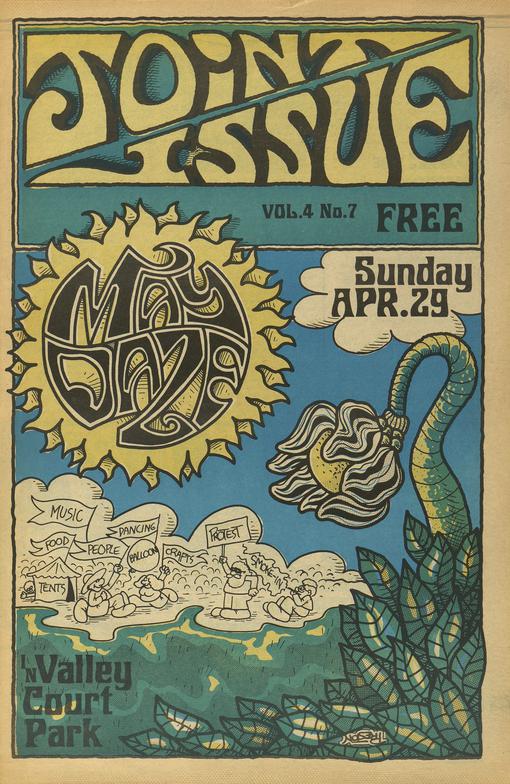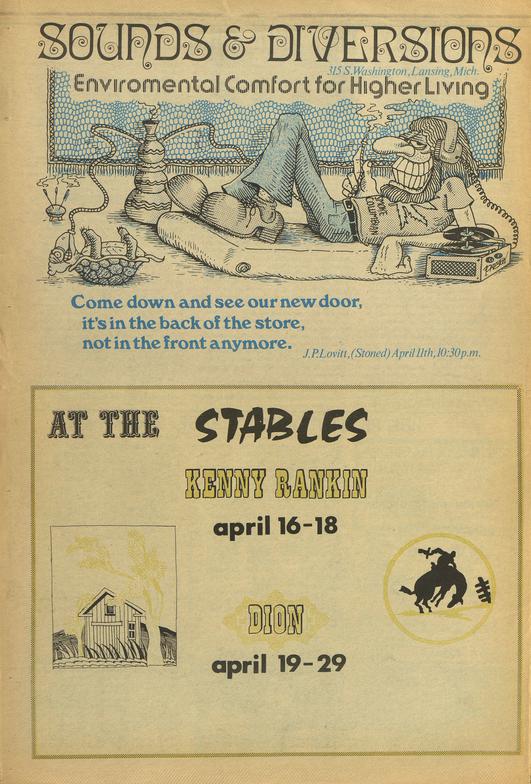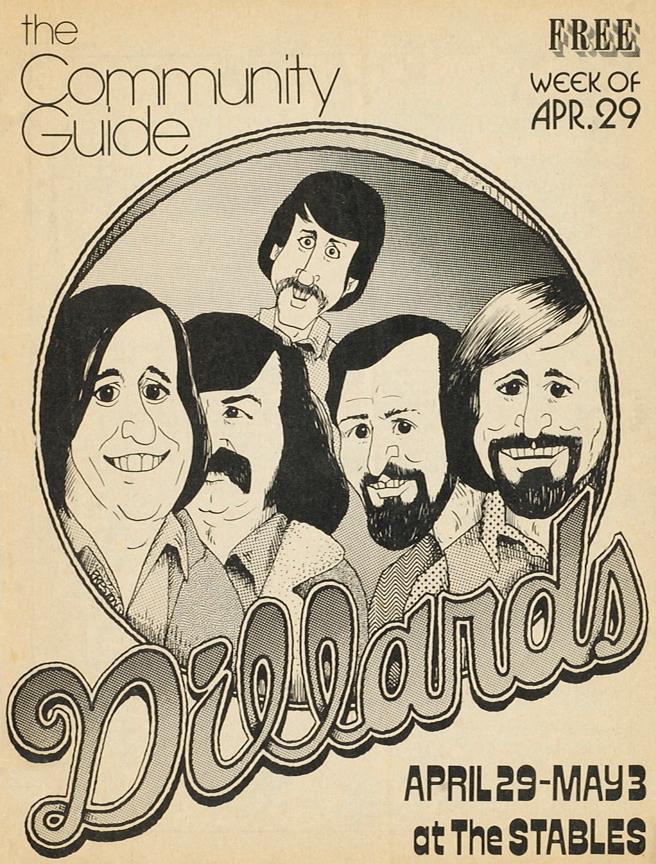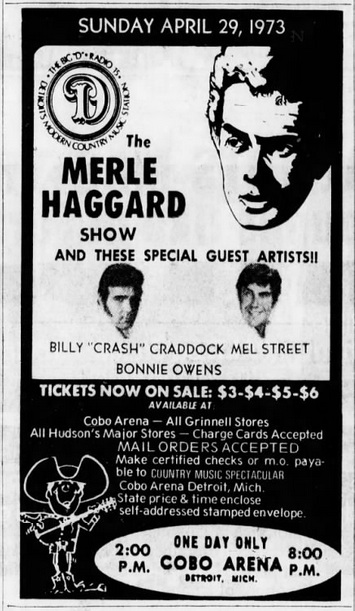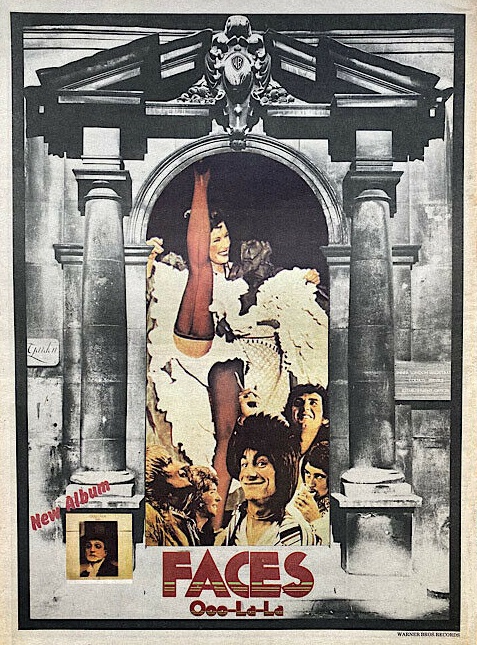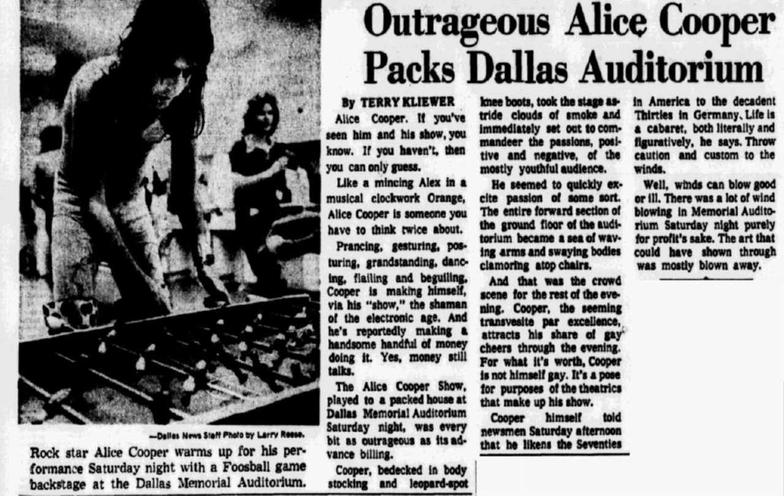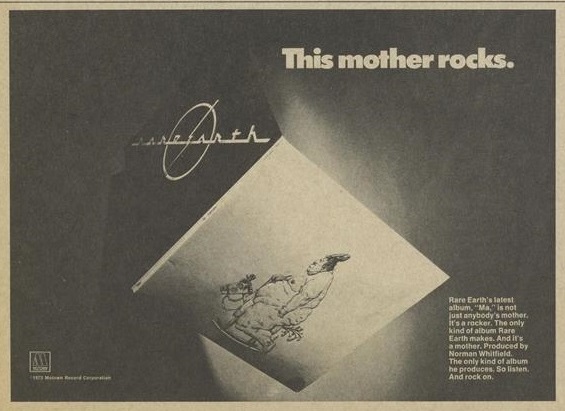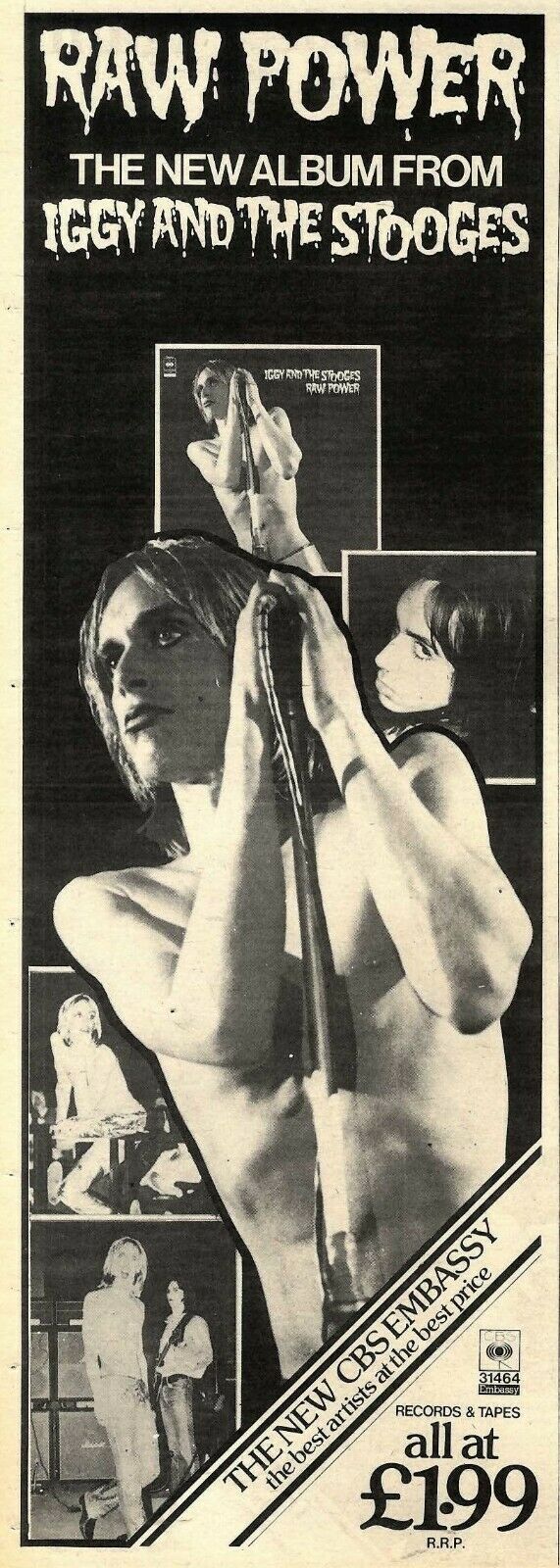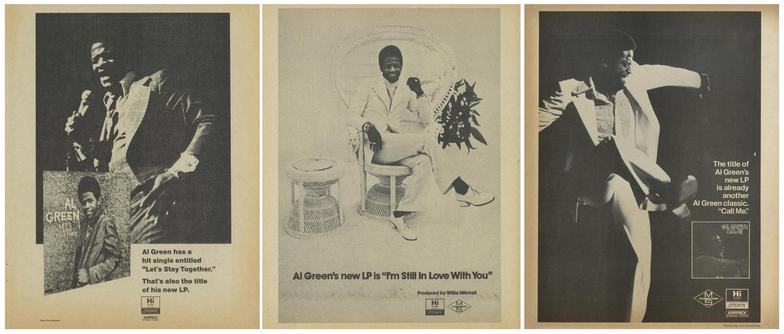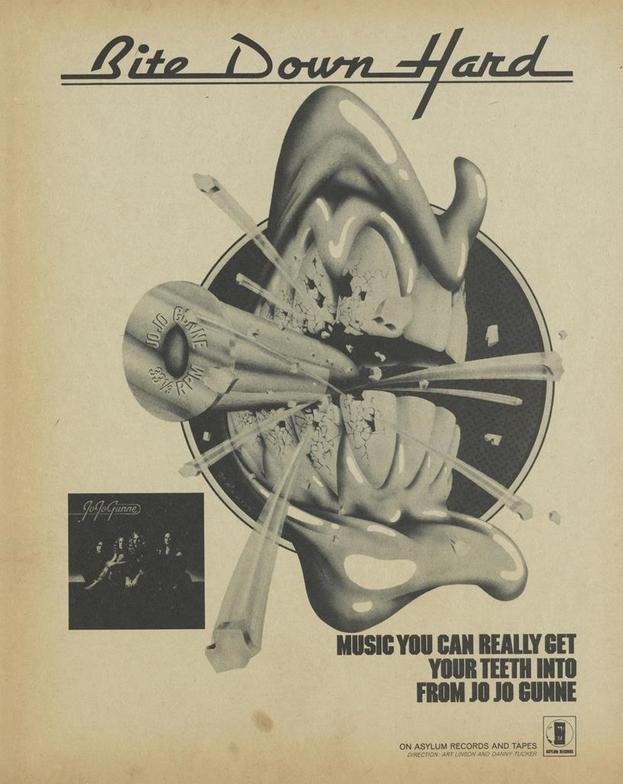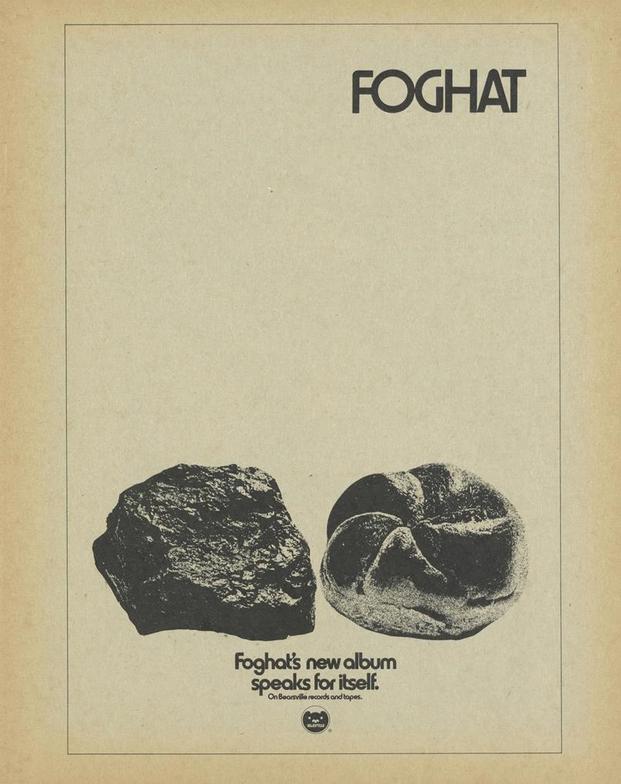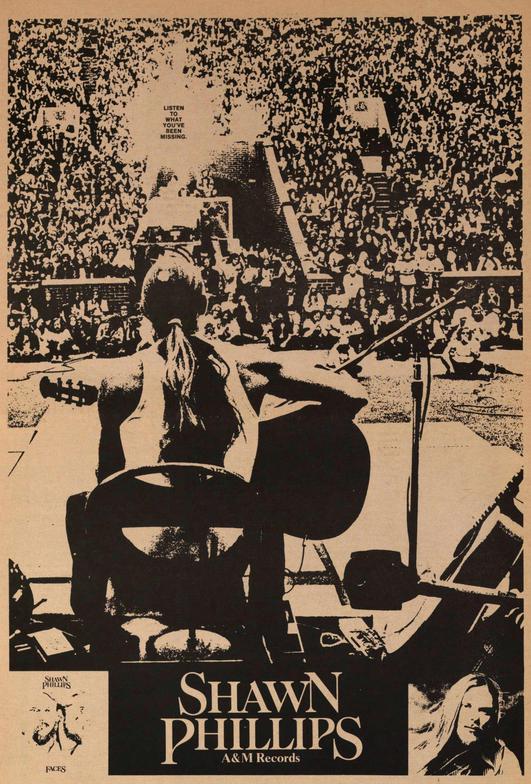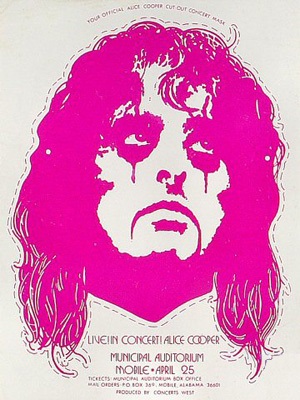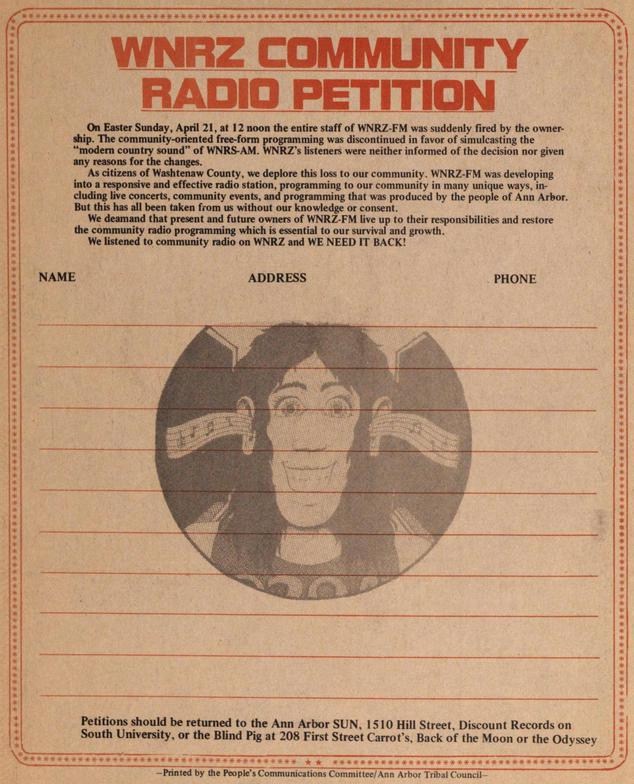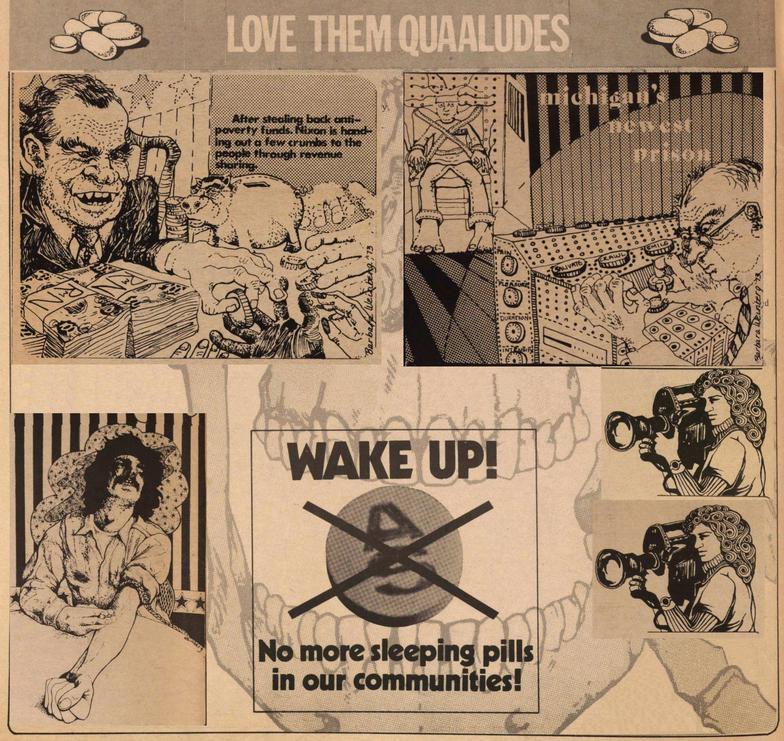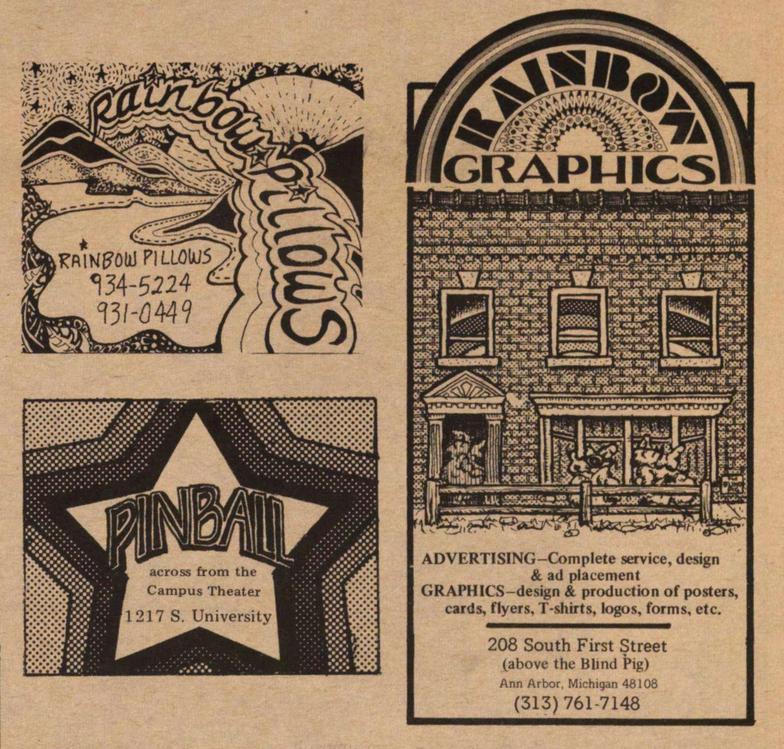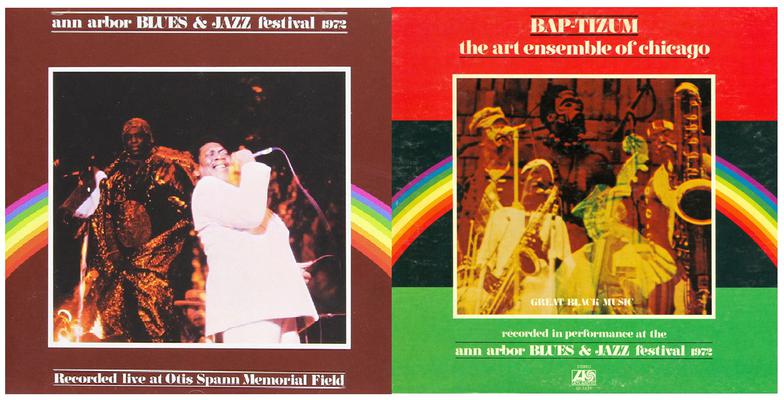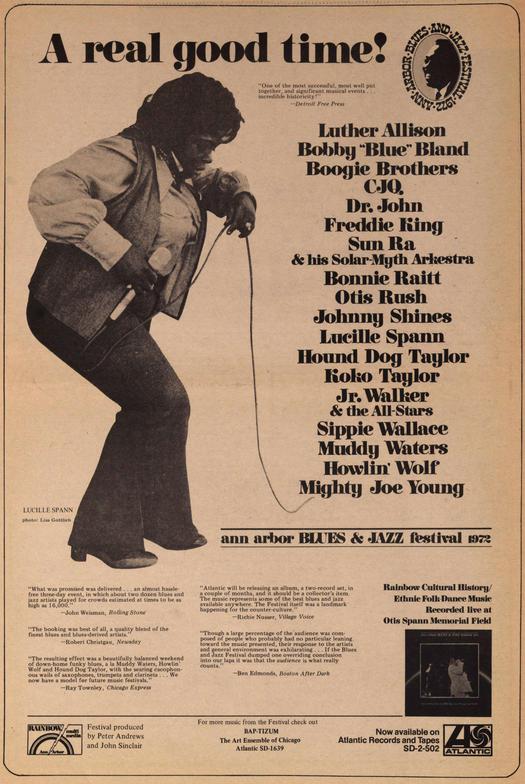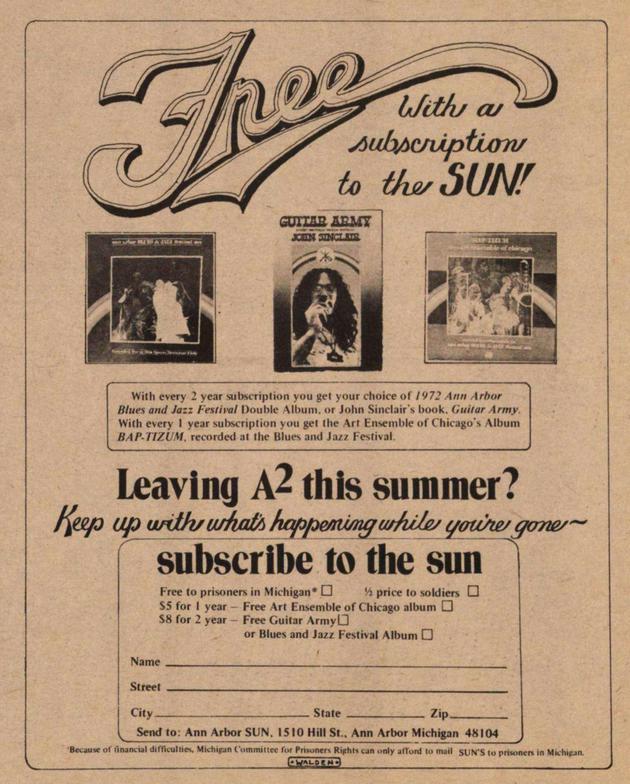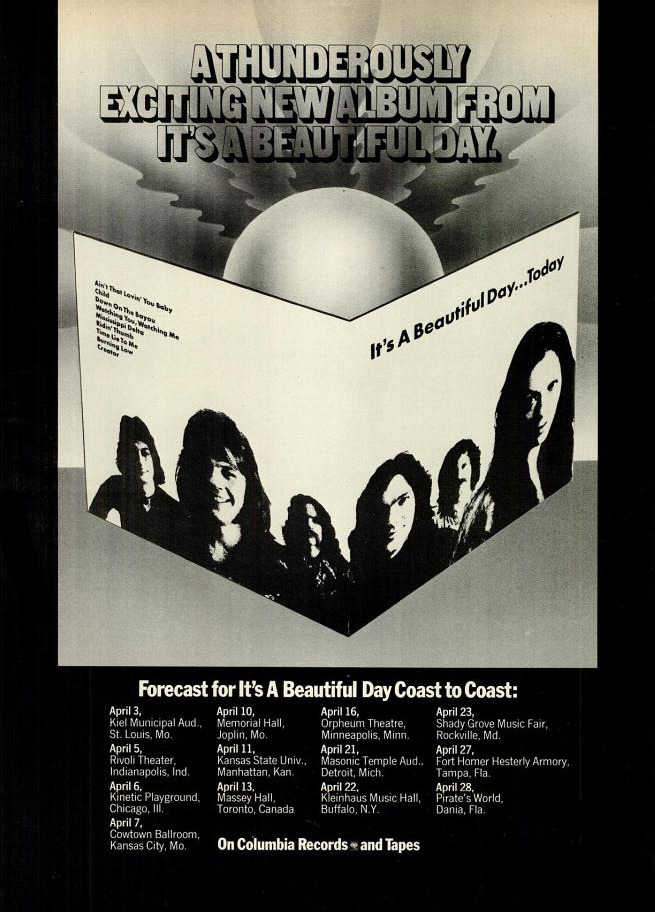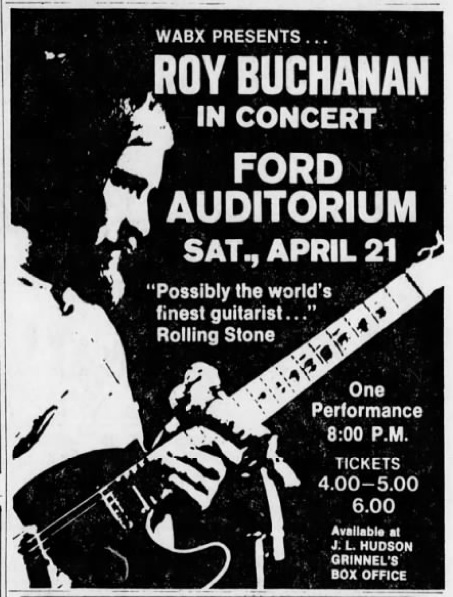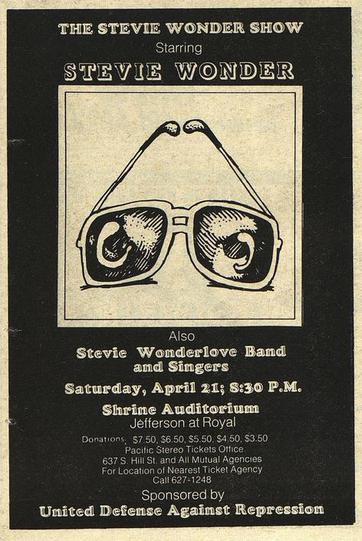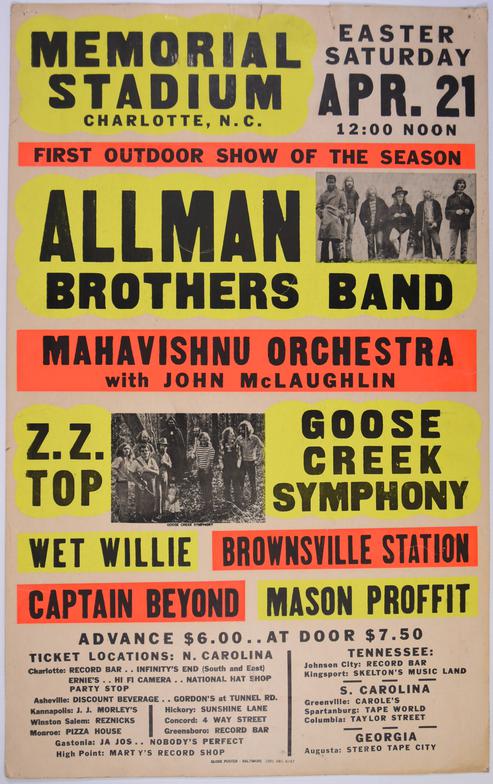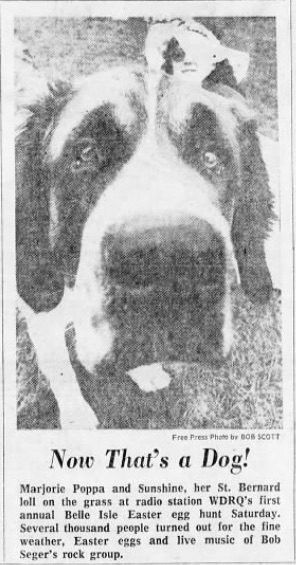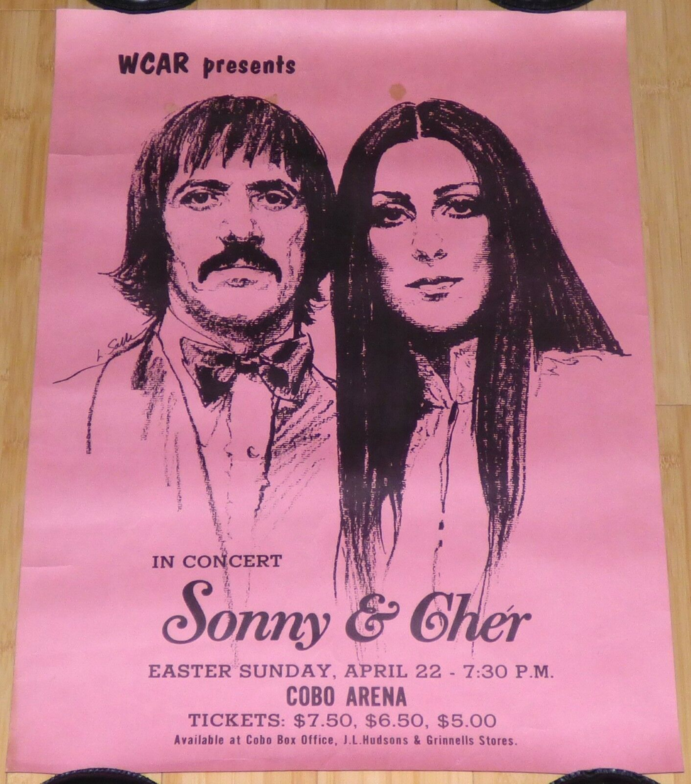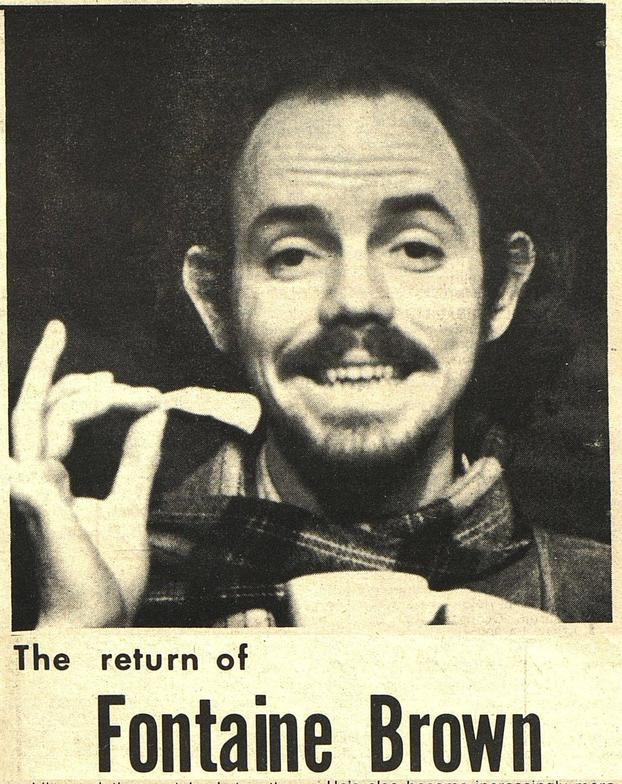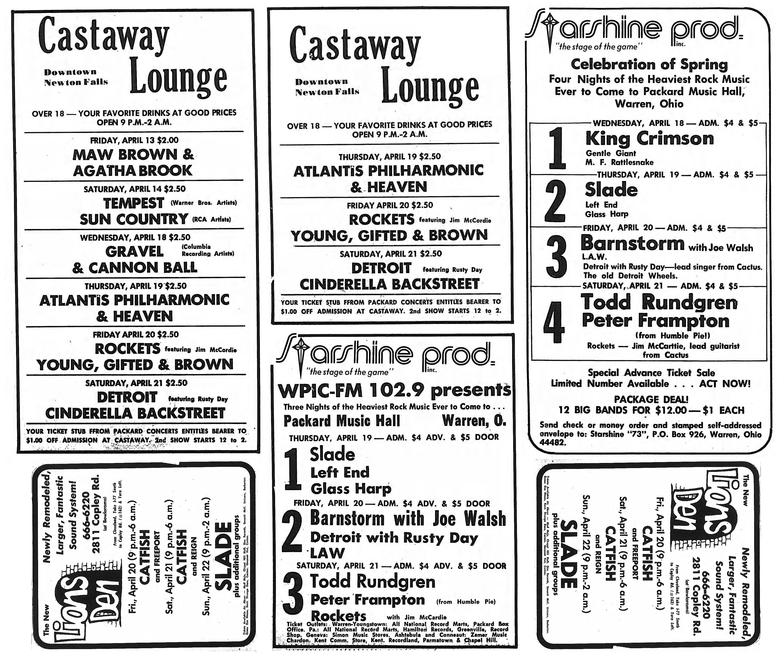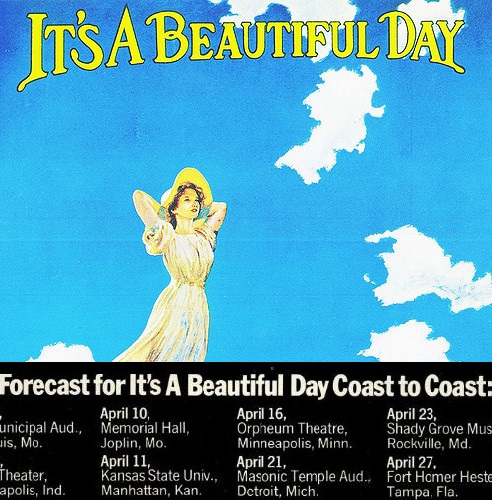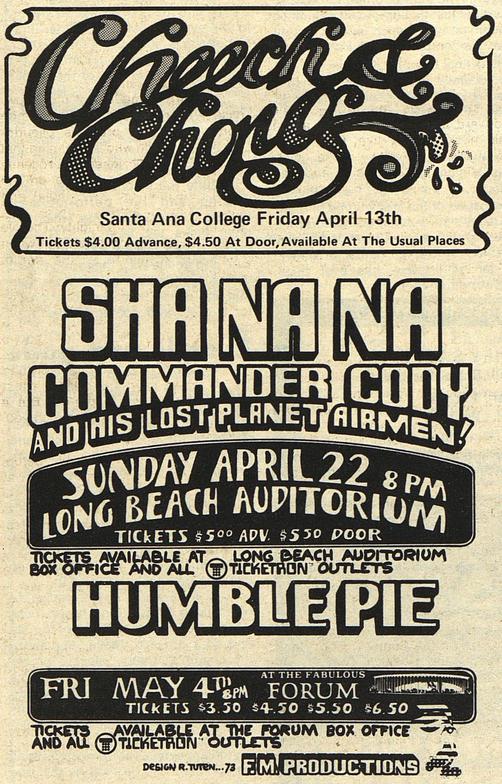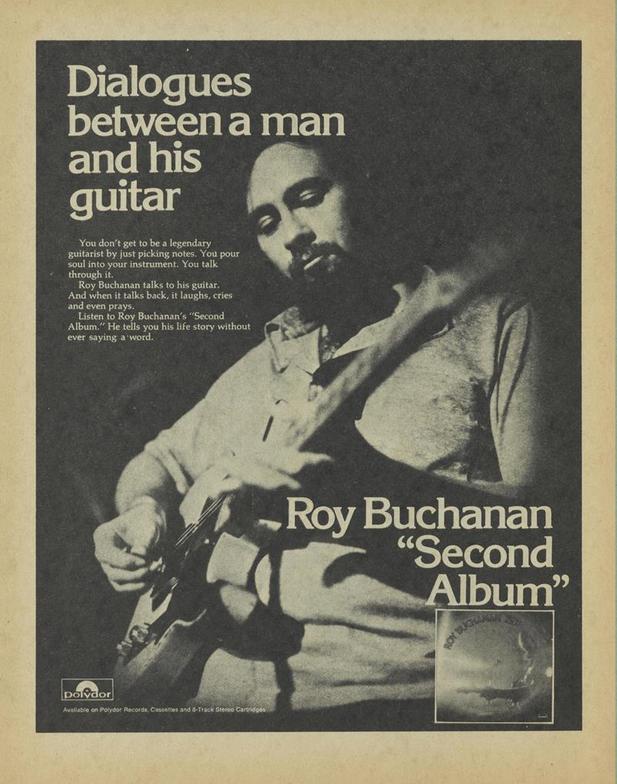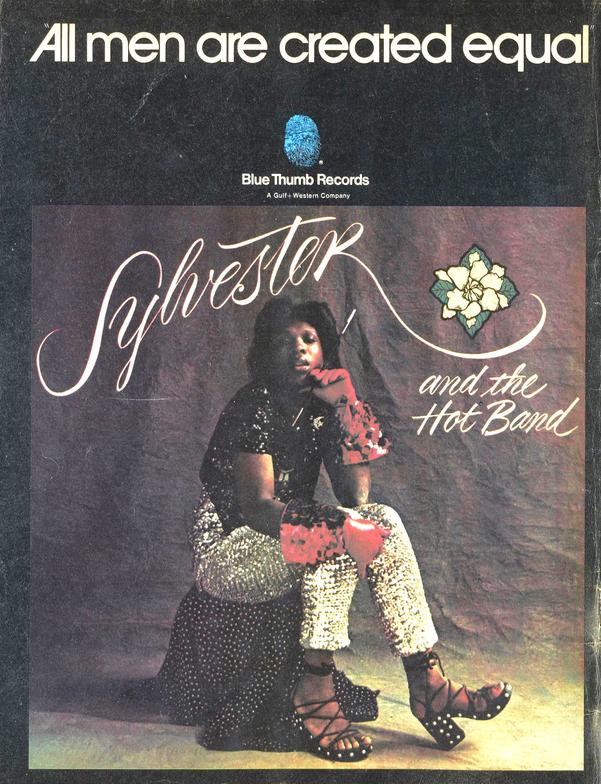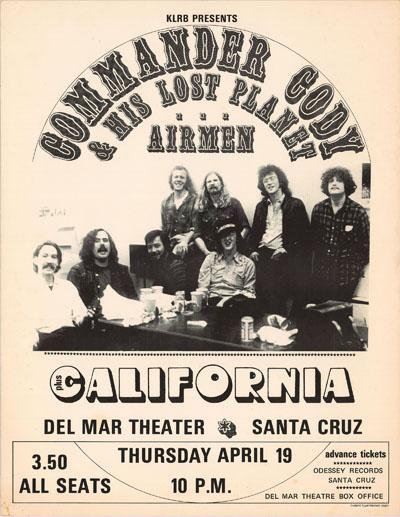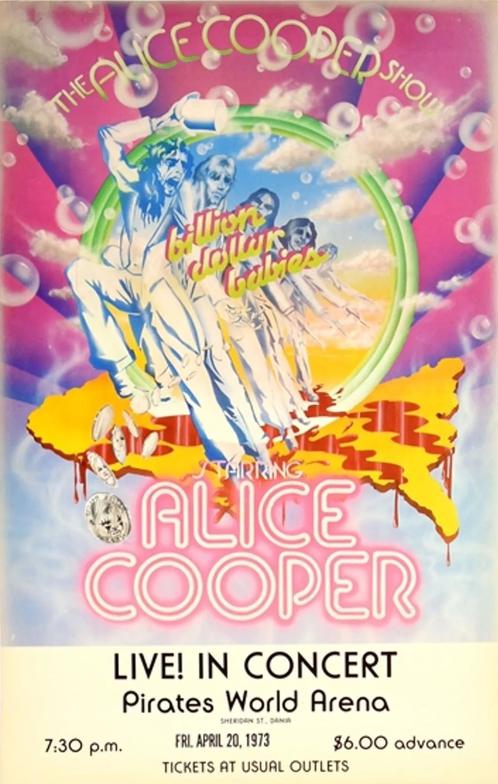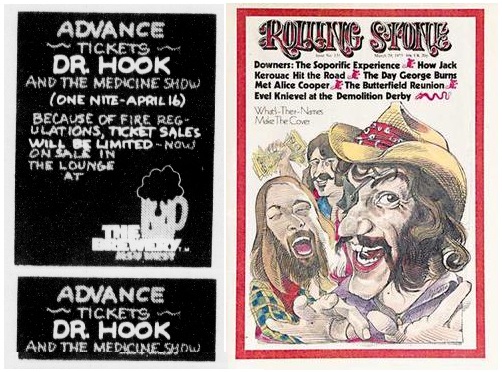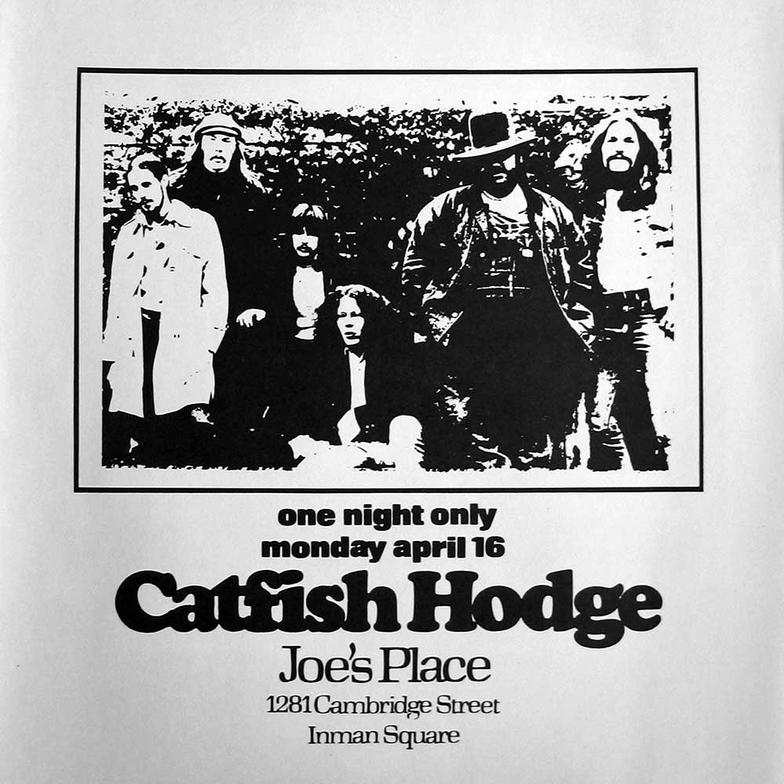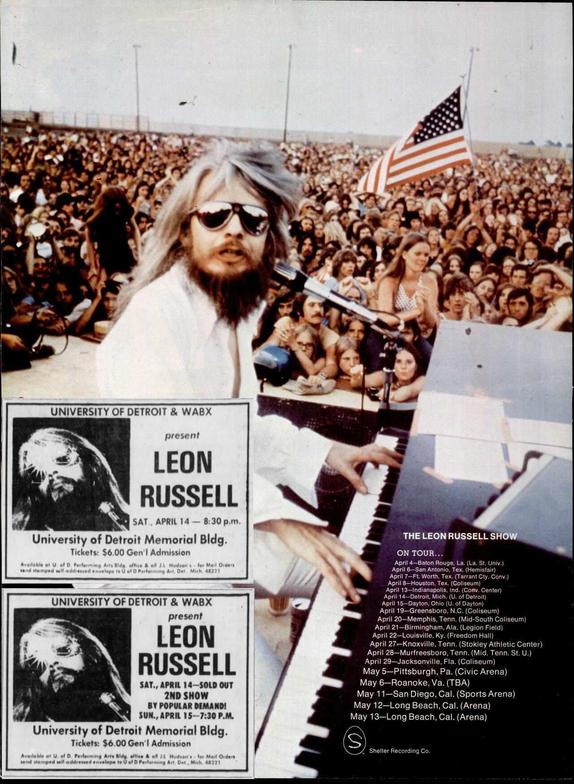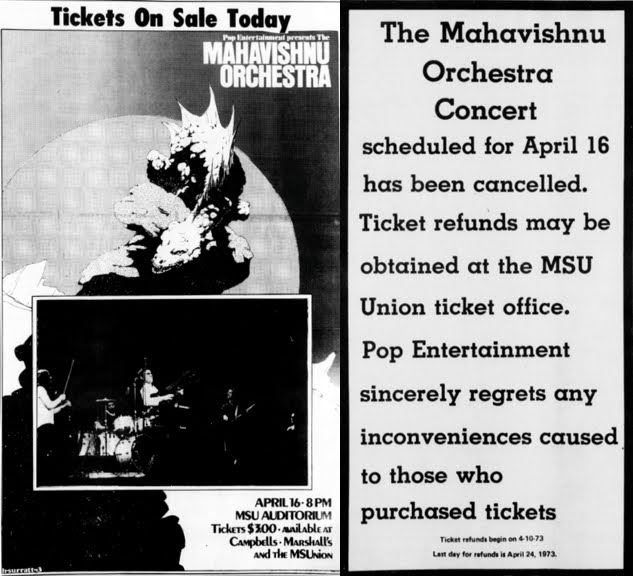Splatt Gallery
Double click here to add text.
Splatt Gallery's History of Michigan Music Posters
Volume Nine - 1973 - Page Six
***********************************************************
Classic Rainbow Graphics lettering and logos for the April 25-29, 1973 gig by Radio King & his Court of Rhythm at the Rock & Roll Farm in the City of Wayne, Michigan.
This appears to be the only recording that we can find by the band:
Radio King & his Court of Rhythm – Magic City (1975)
https://www.youtube.com/watch?v=1nY9P-tXKU0
Record company ad for the British band Foghat with tour dates that included a show at Cobo Hall in Detroit, Michigan, April 26, 1973. They were opening for Johnny Winter in this, their second, Detroit appearance.
The Mariah Coffeehouse at Michigan State University in East Lansing, Michigan changed their ad logo from a hand holding a steaming cup, to a cascading musical notation. They continued to bring in great acts, such as Bonnie Raitt (misspelled as Rath) with Little Feat on April 26-27, 1973. “Leo Koltice” listed at the end of the schedule was, as corrected in later ads, Leo Kottke.
Diana Ross on the cover of the April 27, 1973 issue of the British music magazine Blues & Soul.
The Milwaukee, Wisconsin band Truc performed at the Louis Armstrong Theater at Grand Valley State College near Grand Rapids, Michigan, April 27, 1973, poster illustration by Jon Paris. The band later relocated to W. Palm Beach, Florida, modifying their name to Truc of America.
Here’s an entertaining account by one of their professed groupies, along with some videos of the band:
http://jam2day.blogspot.com/2011/09/true-confessions-of-rock-n-roll-groupie.html
An early ad for the 1973 Ann Arbor Blues & Jazz Festival, above an ad for the Stanley Cowell Trio at the Strata Concert Gallery in Detroit, Michigan, April 27-28, 1973.
A pair of slightly different posters by Clark Bradley for Commander Cody & his Lost Planet Airmen, with Asleep At The Wheel, at the Armadillo World Headquarters in Austin, Texas, April 27-28, 1973.
Poster by Jim Franklin and Micael Priest for the Armadillo World Headquarters in Austin, Texas with Commander Cody & the Lost Planet Airmen appearing April 27-28, 1973.
The third Stooges album, the first Iggy & the Stooges album, made its entry on Billboard magazine’s Top LP’s chart on the week ending April 28, 1973, at #186. Cover photo by Mick Rock.
Here is how it should sound, with the scratchy vinyl crunch. We wanted to post a picture of our autographed copy, but it’s gone missing (sad face).
Iggy & the Stooges – Search and Destroy (1973)
https://www.youtube.com/watch?v=EtK8zpsOiLo
The front cover of the Columbia Records press kit folder for the release of the “Raw Power” album by Iggy and the Stooges.
Promo posters for the third Stooges album, the first Iggy & the Stooges album, “Raw Power”. Wikipedia has the album’s release date as February 7, 1973, a date which has found its way onto other sources as well, but must be too early. More detailed sources such as Paul Trynka's book “Open Up and Bleed” have the release as May 1973.
However, looking at the documentation in Billboard magazine, “Raw Power” has its first entry in the Top LP’s chart for the week ending April 28, 1973, entering at position #186. The following week, ending May 5, has the album at #182, the week after that, ending May 12, it has dropped to #193. After that, it disappears off the chart. Not only does this give us verifiable dates, it also shows that the album was a flop in terms of sales upon its release.
Iggy & the Stooges – Raw Power (1973)
https://www.youtube.com/watch?v=0PeuL9ISvn8
Beginning with the March 17, 1973 issue of The Fifth Estate newspaper in Detroit, Michigan, the paper’s Events Calendar became much bigger and vastly improved with the addition of Cathy Kauflin to the staff. Listings began to include more of the small music clubs, such as Limbo’s, and each calendar included a “Cathy’s Calendar Clue” box that hi-lighted her latest tips, this particular one, from the April 28, 1973 issue talked about the untapped growing rock scene at the Lincoln Park Theater. Each week had the deliberately intriguing photo of the reporter’s backside, until the July 21 issue, when we finally got to see our intrepid tour guide.
Dennis Preston poster for the Owosso Armory in Owasso, Michigan, located between Lansing and Flint, with Azrael, The Dogs, and Magnolia, April 28, 1973.
A newspaper ad with Alice Cooper in Dallas, Texas on April 28, 1973 and in Ft. Worth, Texas five days later.
Gary Grimshaw poster for a benefit for flood victims in Monroe, Michigan, at the Full Tilt Boogie Ballroom in Monroe, April 29, 1973. The benefit was organized by Rusty Day, with his band Detroit headlining the show that included Lightnin’, Uprising, Roadhouse Exit, plus TNT and Flack, all of whom donated their time and energy to the cause.
Poster for Brownsville Station with Jonathon Round and the Whiz Kids at the Grand Valley State Colleges Fieldhouse near Grand Rapids, Michigan, April 29, 1973.
Live footage of Alice Cooper’s show in Houston, Texas on April 29, 1973 was filmed for use in the “Good To See You Again, Alice Cooper” movie. The clip linked below is from the show’s encore. Alice comes on looking relaxed in a red t-shirt and the band plays a long loopy vamp until it suddenly explodes with a shredding riff that opens “Under My Wheels”. There’s a bit of a creep factor when Alice starts soliciting teenage girls in the audience, but his command of the exceedingly thin line between the performer and the edge of the stage is remarkable. The band is rock-solid tight, bassist Dennis Dunaway is high-kicking, and the overall performance ranks as one of our favorite videos.
Alice Cooper – Under My Wheels (live 4/29/73)
https://www.youtube.com/watch?v=-YXy74iK-hk
Poster by an unknown artist for the Liberty Hall in Houston, Texas, with two shows by Commander Cody & His Lost Planet Airman on April 29, 1973, the same night that Alice Cooper was also performing in Houston.
Dennis Preston cover for the Joint Issue newspaper in East Lansing, Michigan, promoting a “May Daze” event at the Valley Court Park, for April 29, 1973.
Back page of the same issue of the Joint Issue newspaper in East Lansing, Michigan, with Dennis Preston ad for the Sounds & Diversions store and the schedule for The Stables. The shows by Dion, April 19-29, 1973, are the first known shows in Michigan by the singer since the Rod-O-Rama show at the Michigan State Fairgrounds in 1961.
Dennis Preston illustration for The Dillards at The Stables in East Lansing, Michigan, April 29, 1973 through May 3rd. The bluegrass band from Salem, Missouri is perhaps best known for their regular appearances as a trouble-making hillbilly band, The Darlings, on the Andy Griffith Show.
An ad for the Merle Haggard Show at Cobo Arena in Detroit, Michigan, April 29, 1973.
A full-page Warner Bros. Records ad for the fourth, and final, studio album by the Faces, released about a month before the band’s appearance at Cobo Arena in Detroit on April 30, 1973, their 18th Michigan show in a four-year period. The album “Ooh La La” reached #1 in the UK, their only one to top the chart.
The title track “Ooh La La” incidentally did not feature Rod Stewart, the lead vocals on the recording are by guitarist Ronnie Wood.
The Faces – Ooh-La-La (1973)
https://www.youtube.com/watch?v=Qg3dF02FQVM
Volume Nine - 1973 - continues - HERE
A Motown Records ad for the sixth studio album by Rare Earth, “Ma”, released in April 1973. The album only contained five tracks, all composed and produced by Norman Whitfield. The title track comprised all of Side One.
An ad in a British publication for the album “Raw Power” by Iggy & the Stooges.
After releasing his debut album “Back Up Train” on the Grand Rapids, Michigan record label Hot Line Music Journal in March 1967, singer Al Greene was persuaded to leave his Grand Rapids high school friends the Soul Mates, and to drop the “e” from his last name, by Memphis record producer Willie Mitchell.
The first two albums that Mitchell produced for Green, “Green Is Blues” in April 1969 and “Al Green Gets Next to You” in March 1971 were moderately successful, but the next three albums were one of the greatest back-to-back-to-back trios in soul music.
“Let's Stay Together” (January 1972), “I'm Still in Love with You “ (October 1972) and “Call Me” (April 1973), all reached #1 on the Billboard R&B Albums chart (as would his next three albums as well), and all reached the Top Ten on the Billboard 200 chart (his only albums that would achieve that feat).
These three albums also produced three #1 R&B singles, three #2 R&B singles, and six Top Ten singles on the Billboard Hot 100 singles chart, including his only #1 single on that chart, "Let's Stay Together". His flush of success even prompted two tracks from the “Back Up Train” album to enter the charts.
Here is the last of those tracks from that string of successes:
Al Green - Here I Am (Come and Take Me) (1973)
https://www.youtube.com/watch?v=aTpDFXhgGjM
A full-page Asylum Records ad for the second album by the Los Angeles, California band Jo Jo Gunne, coinciding with the group’s sixth Michigan appearance, opening for the Faces at Cobo Arena in Detroit on April 30, 1973.
Record company ad for Texas singer/songwriter Shawn Phillips. It does not provide the information for a show, but it ran in the Ann Arbor Sun newspaper during the same week that Phillips performed at Ford Auditorium in Detroit, April 24, 1973. The newspaper ad for Ford Auditorium had Phillips, in his first Michigan appearance, misspelled first name as Sean.
“Your Official Alice Cooper Cut-Out Concert Mask” for a concert in Mobile, Alabama on April 25, 1973.
By the time that the Ann Arbor SUN resumed regular publication with the April 23, 1973 issue, after nearly a three-month absence, events in town had taken a turn for the worse. The Republicans had taken control of the City Council and a Republican mayor had been elected, with the promise to rescind the city’s $5 marijuana law at the top of his list. The new mayor also intended to increase funding for the police and eliminate revenue sharing to community groups.
The paper had stories of raids on the U of M dormitories, and the arrest and assault on a local jazz musician, who was quoted, “The police have been unleashed since the Republican takeover”.
And on top of all that, WNRZ radio was abruptly “snuffed” on Easter Sunday, April 22, 1973, the FM staff was fired, and the station converted to simulcasting an AM country music station. A petition was published on the back page to demand a return to community radio.
The Ann Arbor SUN resumed regular publication with the April 23, 1973 issue, and with a new staff member, Barbara Weinberg, contributing illustrations. She became a managing editor and the art director by the end of the year.
An ad for Rainbow Graphics, in their new location above the Bind Pig bar in Ann Arbor, Michigan, from the April 23, 1973 issue of the Ann Arbor SUN newspaper. The ad for the Pinball Alley was drawn by Gary Grimshaw, we don’t think that the Rainbow Pillows store was associated with the Rainbow People’s Party.
Gary Grimshaw’s record cover artwork for two albums of recorded performances from the 1972 Ann Arbor Blues & Jazz Festival that were released by Atlantic Records in April 1973. The concerts were recorded by Metro Audio in Royal Oak, Michigan, who also recorded the J. Geils Band’s “Full House” album, and will later record Bob Seger’s “Live Bullet”.
Ann Arbor Blues & Jazz Festival 1972 (album) (1973)
https://www.youtube.com/watch?v=vtfi6PaZB58
Full-page ad in the April 23, 1973 issue of the Ann Arbor SUN newspaper for the 1972 Ann Arbor Blues & Jazz Festival double-album released by Atlantic Records.
Subscription ad in the April 23, 1973 issue of the Ann Arbor SUN newspaper, with premiums that included the Atlantic albums of the 1972 Ann Arbor Blues & Jazz Festival and John Sinclair’s “Guitar Army” book. Ad design by “Walden”.
Record company ad for It’s A Beautiful Day with tour dates, including the show at the Masonic Temple in Detroit, Michigan, April 21, 1973.
A full-page Polydor Records ad for the “Second Album” by Roy Buchanan, coinciding with the guitarist’s appearance at Ford Auditorium in Detroit, Michigan, April 21, 1973.
An ad for guitarist Roy Buchanan at Ford Auditorium, April 21, 1973. Born in Ozark, Arkansas, Buchanan joined Johnny Otis’ band when he was just fifteen years old. Especially well-respected by guitar players, particularly for his tones, you can hear for yourself:
Roy Buchanan – The Messiah Will Come Again (live) (1976)
https://www.youtube.com/watch?v=deeBQZ8Aklc
Poster by Neon Park for Stevie Wonder at the Shrine Auditorium in Los Angeles, California on April 21, 1973. Park is best known for the cover art on nearly every Little Feat album, and for the album cover for Frank Zappa’s “Weasels Ripped My Flesh”.
A Globe Poster with Brownsville Station on the bill with the Allman Brothers Band, Mahavishnu Orchestra, ZZ Top, Goose Creek Symphony, Wet Willie, Captain Beyond, and Mason Proffit in Charlotte, North Carolina on April 21, 1973.
A newspaper photo from the WDRQ East Egg Hunt on Belle Isle in Detroit, Michigan on April 21, 1973, featuring “the music of Bob Seger’s rock group” at the Belle Isle Band Shell.
Poster by an unknown artist L. Sable, for Sonny & Cher at Cobo Arena, in Detroit, Michigan, Easter Sunday, April 22, 1973.
Newspaper ad by Randy Tuten for Commander Cody & his Lost Planet Airmen at the Long Beach Auditorium in California, April 22, 1973.
And look who we ran into, in Los Angeles, California, April 20, 1973, none other than Fontaine Brown, aka Doug Brown as in Doug Brown & the Omens. The Fontaine Brown Band was playing a gig at the Topanga Corral and Los Angeles Free Press writer Todd Everett sat down with Brown to find out what he’d been up to, the article started off by pointing out, “He comes from, of all places, Detroit”.
Brown never mentions the Omens, strangely referring to the as “the Elements”, but, here, we’ll let him tell the story:
“I had a band called Doug Brown and the Elements. At least, that’s what we called it part of the time. What really happened is that whichever of us got the gig used his name. Our bass player was Bob Seger. I produced some of Bob’s early recordings, with the Elements backing him up. This was before ‘Ramblin’ Gamblin’ Man’ and his later hits, but some of the stuff I produced wound up on his albums.
“I was introduced by a friend to Mickey Stevenson. Mickey was a producer at Motown, working with Kim Weston, his wife, and Marvin Gaye. He took me on as his assistant, and I’d go do whatever needed to be done to help him out. I didn’t know it at the time, but Mickey was planning to leave Motown. Pretty soon he did, and came to Los Angeles to form his own label, Venture Records. I followed him out.
“One of the groups on Venture was Southwind. They came from Oklahoma, where they had been playing together for five years. I produced their first album, for the label.
“Venture is no longer in business. There was a large and unexplained fire one night. I had joined Southwind and we were all playing at a club in the Valley. We were approached by a producer, Tommy LiPuma. He was working at A&M, and was trying to go off on his own. Bob Krasnow had just started Blue Thumb Records. He had an album of old W.C. Fields material, one by the original Credibility Gap comedy news team, and an Ike & Tina Turner album. Apparently, he was going to give Tommy a job if Tommy could bring in a good act. It looked great to us; we’d been talking to very straight-looking and straight-thinking guys from record companies, and Krasnow came on with turtlenecks and beads. And they had all those great Tom Wilkes album covers!”
Southwind released two albums on Blue Note Records and then the band broke up to pursue different directions. For Brown, it was to form the Fontaine Brown Band. The article explained that Fontaine was his middle name, which he hated, but after hearing people call him by it so much, he gave up fighting it. The article also described the band as including guitarist John Uribe and bassist Dave Farrell, both formerly with the band Illinois Speed Press. The article concluded, “The Fontaine Brown Band shows a musical direction closer to Brown’s Detroit rock and roll roots than it does to Southwind.”
A handful of ads showing Michigan bands crossing paths in Northeastern Ohio. The Rockets appeared at the Castaway Lounge in Newton Falls, Ohio on April 20, 1973, the same night that Detroit featuring Rusty Day opened for Barnstorm at the Packard Music Hall in Warren, Ohio.
The next night, the two bands switched places, with Detroit at the Castaway Lounge and the Rockets opening for Todd Rundgren and Peter Frampton at the Packard Music Hall.
Meanwhile, Catfish was performing at the Lion’s Den in Akron, Ohio on both of these nights.
The promoters had a hard time with the name of guitarist Jim McCarty of the Rockets, referring to him as Jim McCordie, Jim McCardie, and Jim McCarttie.
The ads are also in error in describing Detroit with Rusty Day as “the old Detroit Wheels”. The only former member of the Detroit Wheels that had time in the band Detroit, aside from Mitch Ryder of course, was drummer Johnny "Bee" Badanjek, who by the time of these ads was now the drummer in the Rockets.
The San Francisco band It’s A Beautiful Day made their fourth, and final, Michigan appearance, performing at the Masonic Temple in Detroit, April 21, 1973.
A Blue Thumb Records ad on the back cover of the April 1973 issue of CREEM magazine, coinciding with Sylvester & the Hot Band’s first of only two, Michigan appearances, opening for A Beautiful Day at the Masonic Temple in Detroit, on April 21, 1973. They would return in October, opening for Dr. John at Ford Auditorium in Detroit.
Poster by an unknown artist for Commander Cody & his Lost Planet Airmen in Santa Cruz, California on April 19, 1973.
Poster for Alice Cooper at Pirate's World near Miami, Florida on April 20, 1973.
Ad for an appearance by Dr. Hook & the Medicine Show at The Brewery in East Lansing, Michigan, April 16, 1973, just a few weeks after one of their biggest hits landed them on the cover of the March 29, 1973 issue of Rolling Stone magazine.
Dr. Hook & the Medicine Show – The Cover of ‘Rolling Stone’ (1972)
https://www.youtube.com/watch?v=-Ux3-a9RE1Q
Poster for Catfish Hodge in Cambridge, Massachusetts on April 16, 1973.
Record company ad with tour dates for Leon Russell, including a show at the University of Detroit, April 14, 1973. Due to popular demand, or some problem with the scheduled show for the next night in Dayton, Ohio, Russell stayed in Detroit for a repeat performance on April 15.
Poster by Hugh Surratt for the Mahavishnu Orchestra at the MSU Auditorium in East Lansing, Michigan, April 16, 1973, along with the notice of the cancellation of the concert.
A new rock club, Limbo’s, to keep an eye on. From the April 14, 1973 issue of The Fifth Estate newspaper in Detroit, Michigan, an ad by an unknown artist.


